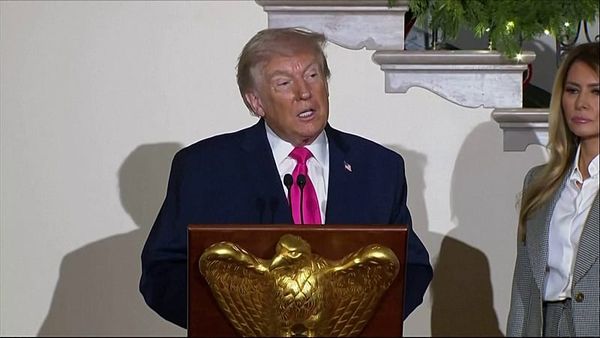
Gold rallied by 27.47% in 2024, closing the year at $2,641 per ounce on the nearby COMEX futures contract. The bullish price action continues in 2025, with gold moving towards a challenge of the $3,000 per ounce level.
In a January 23, 2025, Barchart article on gold, I concluded:
Gold has increasingly shined as an investment asset during this century, and I expect that trend to continue over the coming months and years. Gold may be stuck in neutral in early 2025, but the bull market will remain intact if the price holds above the critical technical support level at the November 2022 $1,618.30 low.
Gold remains the ultimate reserve currency, with central banks and governments adding to reserves. While $3,000 per ounce is a psychological level, the next upside goal is the inflation-adjusted 1980 high.
Gold’s rally continues
COMEX gold futures for April delivery closed 2024 at $2,666.00 per ounce.

The daily chart highlights the almost one-way move higher in 2025, with the April futures reaching a $2,974 high on February 24, 2025.
The gold market tightens- EFPs reflect the tariff threat
London is the home of the international wholesale gold market. The standard bar size in the London market is 400 ounces, worth $1,180,000 at $2,900 per ounce. The most active gold futures exchange, the Chicago Mercantile Exchange’s COMEX division, is domiciled in the U.S. The standard bar size for a COMEX contract is 100 ounces, worth $290,000.
The threat of tariffs and confusion and a lack of transparency if tariffs will impact gold flows into the U.S. has caused a significant differential for gold in London versus gold in the U.S., causing an increase in gold shipments out of London vaults into the U.S. The EFP, or transaction that reflects the differentials of gold prices in the U.S. in COMEX warehouses versus the price of gold in London vaults. The gold market on COMEX has tightened because of the EFP differential. Moreover, moving gold from London to the U.S. has caused tightness in the London market, as shipping the metal can be cumbersome. The bottom line is that the tightening gold market has put upward pressure on prices.
Gold’s inflation-adjusted upside target
Gold’s bull market began long before the current tightness, which only exacerbated the upward momentum. In 1980 gold reached a record high of $875, which remained the peak until 2008. Meanwhile, $875 in 1980 is worth a lot more in 2025.

The chart shows that the inflation value of $875 in 1980 was worth $3,331.04 on average in 2024 and is slightly higher in 2025. Therefore, gold would have to move above the inflation-adjusted level to make a new actual high, which could be in the cards over the coming weeks and months.
Buying on price weakness has been optimal
Even the most aggressive bull markets rarely move in straight lines.

The continuous quarterly COMEX gold chart dating back to 1974 shows that gold has experienced many pullbacks over the years, and since 1999, the year the current bull market began.
Over the years, buying gold on price weakness has been optimal. However, new highs have increased risk, as buyers at or near highs in 1980, 2011, 2020, and 2022 experienced significant indigestion from pullbacks.
Watch the dollar and U.S. rates- GLD is the leading gold ETF product
While the gold market will be watching if central banks continue their veracious appetite for increasing gold reserves over the coming months and years, the U.S. dollar and U.S. interest rates have historically impacted the path of least resistance of gold prices. A weaker dollar and falling interest rates typically support higher gold prices and vice versa. However, gold has ignored a stronger dollar over the past months and rising interest rates over the past years. When it comes to interest rates, the increase was a function of higher inflation, which tends to support gold prices.
The bottom line is that the trend remains our best friend, and gold’s trend is higher in March 2025. The most direct route for investment or a risk position in gold is the physical market for bars and coins. The COMEX gold futures provide a delivery mechanism. While there are many gold and gold-related ETF and ETN products, the Gold SPDR (GLD) was the first commodity-based ETF and remains the most liquid and successful gold ETF product.
At $266.58 per share, GLD had over $82.55 billion in assets under management and trades an average of more than 9.12 million shares daily. GLD owns gold bullion, which involves storage and insurance costs. The ETF’s 0.40% management fee includes those and other administrative expenses.
I believe gold is on a path to eclipse the inflation-adjusted 1980 high at over $3,300 per ounce, but the route could include speed bumps. Buying gold or adding to existing long positions on price weakness, leaving room to add on further and deeper declines, has been optimal for decades, and I expect that trend to continue.







